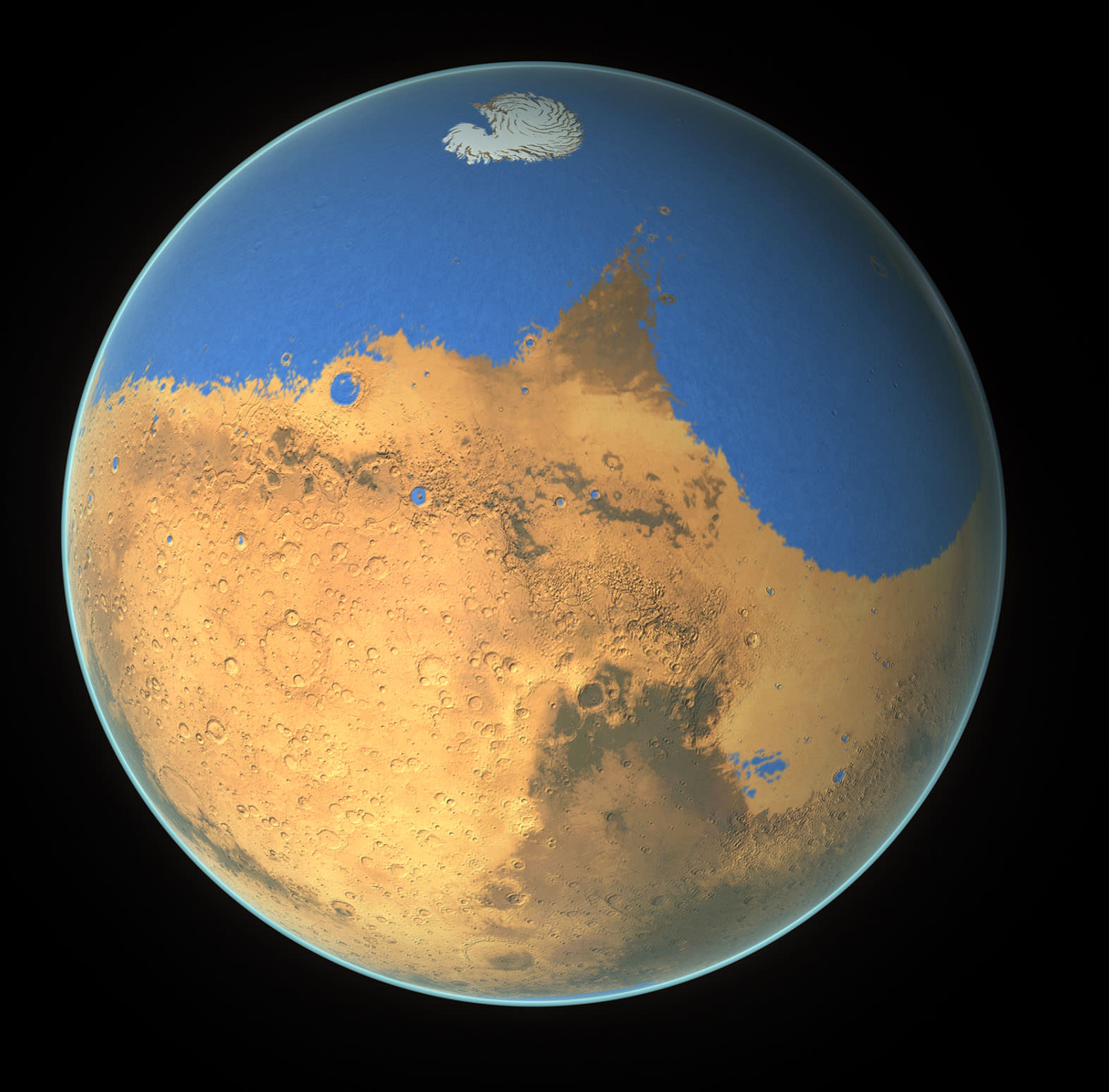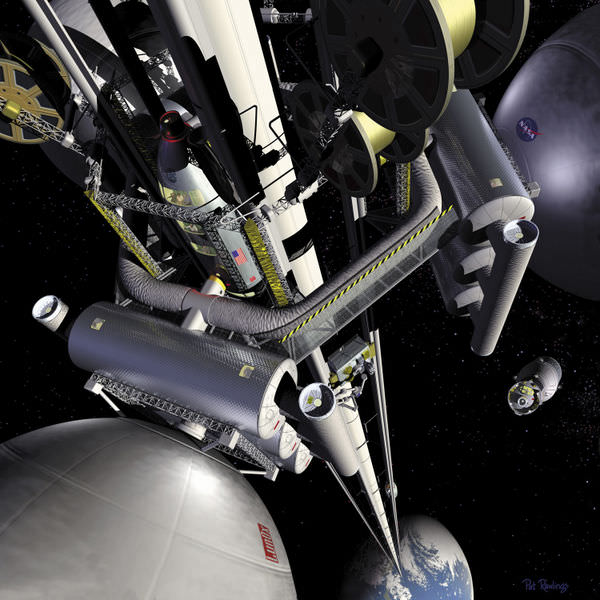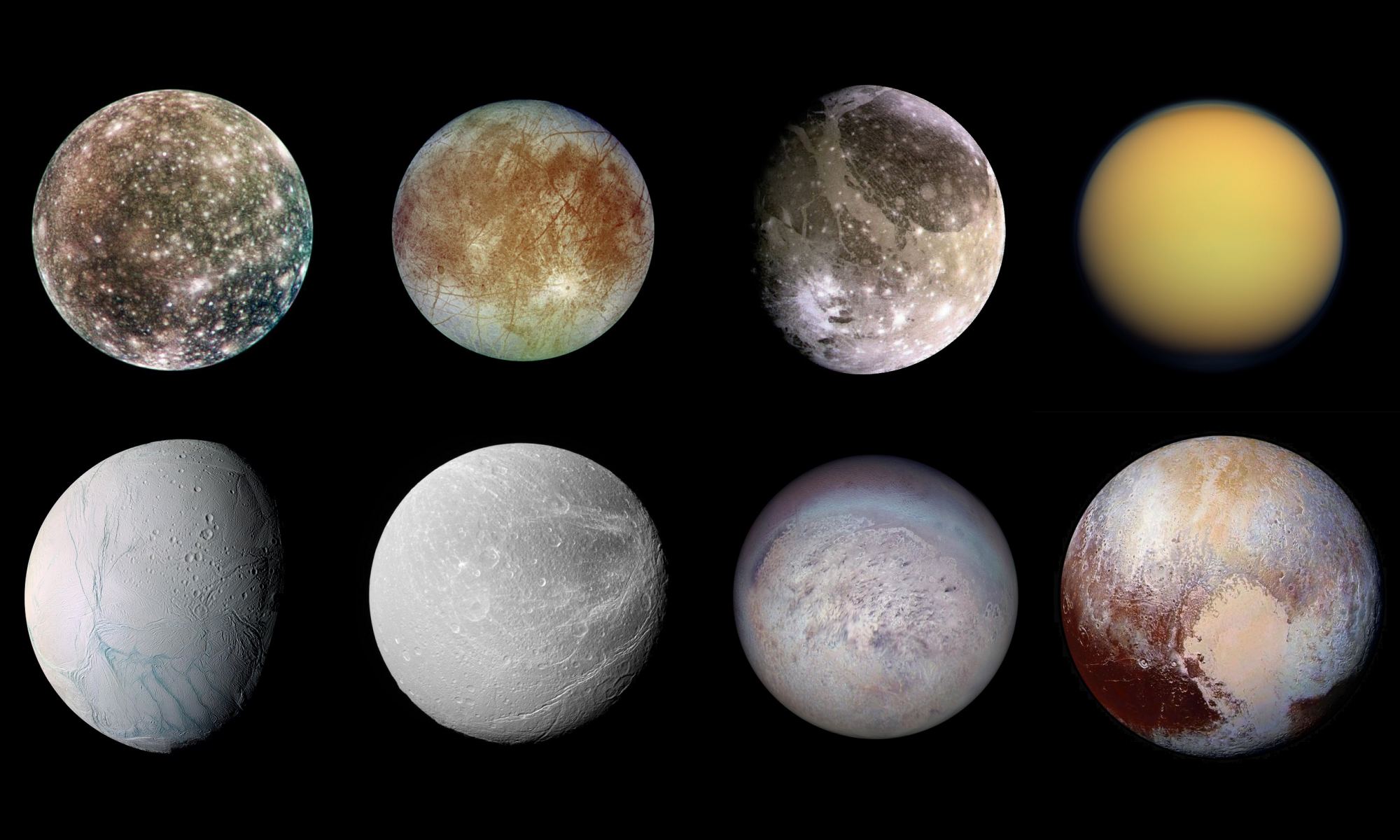Here at UT, we’ve had several stories that describe the concept of a space elevator. They are designed to make it easier to get objects off Earth and into space. That, so far, has proven technically or economically infeasible, as no material is strong enough to support the structure passively, and it’s too energy-intensive to support it actively. However, it could be more viable on other worlds, such as the Moon. But what about worlds farther afield? A student team from the University of Colorado at Colorado Springs looked at the use case of a space elevator on Ceres and found that it could be done with existing technology.
Continue reading “Using A Space Elevator To Get Resources Off the Queen of the Asteroid Belt”Iron Winds are Blowing on WASP-76 b

Exoplanets have been discovered with a wide range of environmental conditions. WASP-76b is one of the most extreme with a dayside temperature of over 2,000 degrees. A team of researchers have found that it’s even more bizarre than first thought! It’s tidally locked to its host star so intense winds encircle the planet. They contain high quantities of iron atoms that stream from the lower to upper layers around the atmosphere.
Continue reading “Iron Winds are Blowing on WASP-76 b”ALMA Detects Hallmark “Wiggle” of Gravitational Instability in Planet-Forming Disk

According to Nebula Theory, stars and their systems of planets form when a massive cloud of gas and dust (a nebula) undergoes gravitational collapse at the center, forming a new star. The remaining material from the nebula then forms a disk around the star from which planets, moons, and other bodies will eventually accrete (a protoplanetary disk). This is how Earth and the many bodies that make up the Solar System came together roughly 4.5 billion years ago, eventually settling into their current orbits (after a few migrations and collisions).
However, there is still debate regarding certain details of the planet formation process. On the one hand, there are those who subscribe to the traditional “bottom-up” model, where dust grains gradually collect into larger and larger conglomerations over tens of millions of years. Conversely, you have the “top-down” model, where circumstellar disk material in spiral arms fragments due to gravitational instability. Using the Atacama Large Millimeter/submillimeter Array (ALMA), an international team of astronomers found evidence of the “top-down” model when observing a protoplanetary disk over 500 light-years away.
Continue reading “ALMA Detects Hallmark “Wiggle” of Gravitational Instability in Planet-Forming Disk”Largest Dark Matter Detector is Narrowing Down Dark Matter Candidate
In 2012, two previous dark matter detection experiments—the Large Underground Xenon (LUX) and ZonEd Proportional scintillation in Liquid Noble gases (ZEPLIN)—came together to form the LUX-ZEPLIN (LZ) experiment. Since it commenced operations, this collaboration has conducted the most sensitive search ever mounted for Weakly Interacting Massive Particles (WIMPs) – one of the leading Dark Matter candidates. This collaboration includes around 250 scientists from 39 institutions in the U.S., U.K., Portugal, Switzerland, South Korea, and Australia.
On Monday, August 26th, the latest results from the LUX-ZEPLIN project were shared at two scientific conferences. These results were celebrated by scientists at the University of Albany‘s Department of Physics, including Associate Professors Cecilia Levy and Matthew Szydagis (two members of the experiment). This latest result is nearly five times more sensitive than the previous result and found no evidence of WIMPs above a mass of 9 GeV/c2. These are the best-ever limits on WIMPS and a crucial step toward finding the mysterious invisible mass that makes up 85% of the Universe.
Continue reading “Largest Dark Matter Detector is Narrowing Down Dark Matter Candidate”Could Comets have Delivered the Building Blocks of Life to “Ocean Worlds” like Europa, Enceladus, and Titan too?
Throughout Earth’s history, the planet’s surface has been regularly impacted by comets, meteors, and the occasional large asteroid. While these events were often destructive, sometimes to the point of triggering a mass extinction, they may have also played an important role in the emergence of life on Earth. This is especially true of the Hadean Era (ca. 4.1 to 3.8 billion years ago) and the Late Heavy Bombardment, when Earth and other planets in the inner Solar System were impacted by a disproportionately high number of asteroids and comets.
These impactors are thought to have been how water was delivered to the inner Solar System and possibly the building blocks of life. But what of the many icy bodies in the outer Solar System, the natural satellites that orbit gas giants and have liquid water oceans in their interiors (i.e., Europa, Enceladus, Titan, and others)? According to a recent study led by researchers from Johns Hopkins University, impact events on these “Ocean Worlds” could have significantly contributed to surface and subsurface chemistry that could have led to the emergence of life.
Continue reading “Could Comets have Delivered the Building Blocks of Life to “Ocean Worlds” like Europa, Enceladus, and Titan too?”There’s More Water Inside Planets Than We Thought

When you walk across your lawn or down the street, you move on the surface of a surprisingly layered world. Some of those layers are rock, others are molten. A surprising amount of water is mixed into those layers, as well. It turns out that most planets have more of it “deep down” than we imagined.
Continue reading “There’s More Water Inside Planets Than We Thought”Why Did Copernicus Reject Geocentrism?
Popular science history paints a picture of the Greek geocentric model dominating astronomical thought beginning around the 3rd century BCE, and being the favored model for ~1,500 years. Then, suddenly (it suggests), astronomical thought was overhauled at the birth of the Renaissance by brilliant astronomers such as Copernicus, Kepler, and Galileo, all of whom rejected placing the Earth at the center of the cosmos.
But these sources are generally quiet on why this shift occurred. If mentioned at all, sources generally suggest that it was because the Ptolemaic geocentric model was too complicated – overly burdened with epicycle and equants. Heliocentrism, in comparison, was simple – elegant, even.
Yet, Copernicus’ heliocentric model was still rooted in the Greek philosophical principles of uniform circular motion. Thus, it too was forced to adopt many of the complications we’re regularly told were the reason for rejecting Ptolemy’s model – epicycles included.
So, why then, did Copernicus actually turn his back on over 1,500 years of astronomical thought?
The answers are an interesting glimpse into the astronomical paradigm of the 16th century.
Continue reading “Why Did Copernicus Reject Geocentrism?”China Will Launch its Mars Sample Return Mission in 2028

While NASA’s Mars Sample Return mission has experienced a setback, China is still moving forward with their plans to bring home a piece of the Red Planet. This week, officials from the China National Space Administration (CNSA) announced their sample return mission, called Tianwen-3, will blast off for Mars in 2028. It will land on the surface, retrieve a sample, and then take off again, docking with a return vehicle in orbit. They also announced another mission, Tianwen-4 will head off to Jupiter in 2030 as well as unveiling a conceptual plan for China’s first mission to test defenses against a near-Earth asteroid.
The announcements were made this week at the second International Deep Space Exploration Conference, also known as the Tiandu Forum, held in China. China says the conference promotes international cooperation for future large-scale missions.
Continue reading “China Will Launch its Mars Sample Return Mission in 2028”Artemis III Landing Sites Identified Using Mapping and Algorithm Techniques

Where would be the most ideal landing site for the Artemis III crew in SpaceX’s Human Landing System (HLS)? This is what a recent study submitted to Acta Astronautica hopes to address as an international team of scientists investigated plausible landing sites within the lunar south pole region, which comes after NASA selected 13 candidate landing regions in August 2022 and holds the potential to enable new methods in determining landing sites for future missions, as well.
Continue reading “Artemis III Landing Sites Identified Using Mapping and Algorithm Techniques”One Step Closer to Solving the Mystery of Mars’ Lost Water

Few scientists doubt that Mars was once warm and wet. The evidence for a warm, watery past keeps accumulating, and even healthy skepticism can’t dismiss it. All this evidence begs the next question: what happened to it?
Continue reading “One Step Closer to Solving the Mystery of Mars’ Lost Water”



